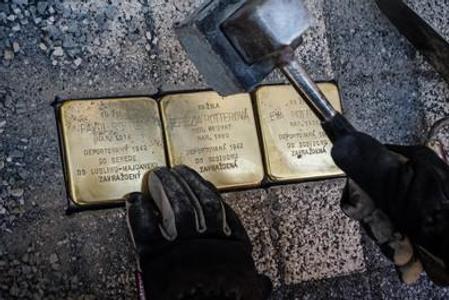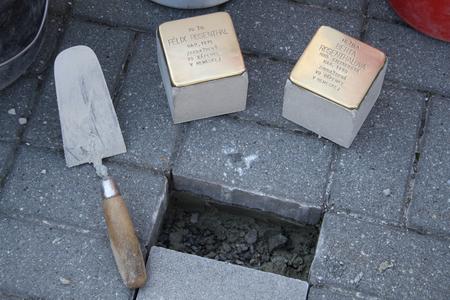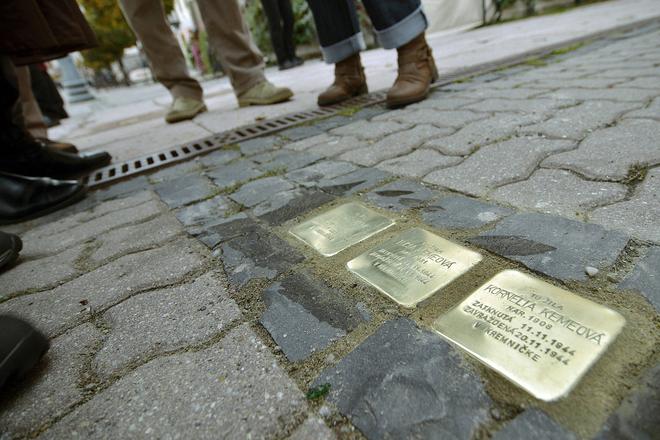In Banská Bystrica, more Stolpersteine, also known as the Stones of the Disappeared in Slovakia, have been laid in front of the home of a family who lost their lives during the Holocaust.
The "stumbling" stones with a brass plaque measuring 10 by 10 centimetres show the victim's name, date of birth and their fate, such as arrest, deportation or the place of murder.
The European project of the German artist Gunter Demnig has run in Slovakia since 2012. The first Stolpersteine were installed in Banská Bystrica and the nearby town of Brezno.

So far, volunteers have laid almost 250 stones in 24 Slovak towns and communities.
Vančo family
This past weekend, in Banská Bystrica, new Stolpersteine were installed on Lazovná Street, where Vančo's house and mill once stood, as reported by the My Banská Bystrica website.
Ján Vančo lived in it with his family. He was a merchant and supporter of the Evangelical Church in Slovakia who helped the anti-Nazi resistance.
"After the suppression of the Slovak National Uprising, he hid wounded insurgents and Jewish citizens in his cellars," said Banská Bystrica deputy mayor Milan Lichý.
Vančo and his family later became victims of Nazi terror. On November 6, 1944, the Sicherheitsdienst intelligence agency detained Vančo and the next day his sick wife Anna and his sons Pavel and Ján. The Vančo family, as well as the people they were hiding, were executed by the Nazis in the village of Kremnička, now part of the Banská Bystrica borough, shortly before Christmas, on December 19, 1944.
The house in which the family used to live burned down in 1972 and was demolished two years later. Only cellars and the ruin of an old tower have been preserved to date, and a parking space replaced the house.
Stumbling
"The story of the heroism of Ján Vančo and his family deserves to remain forever in the memory of the city," said Lichý, adding that it was necessary to continue building walls against hatred, violence and anger.
The stones remind people that the greatest tragedies took place in the streets they walk every day.
"Like more than 80 years ago, little is enough today and those tragedies can become the horrifying everyday reality again," said Andrej Čierny from the organisation Antikomplex.sk, which is behind the Stones of the Disappeared project in Slovakia.

That is why the project should serve as our common "stumbling" over the fate of people inscribed in the cubes in pavements, so that we will never stumble again as in the period of the Nazi regime, added Čierny.
Digitisation
In the vicinity of localities with these "stumbling" stones in Slovakia, stickers with QR codes are gradually being added today. After scanning any of them, people can read a story and find out more about the disappeared person on their smartphone.
In addition, a map has been launched online, on which the individual stories of Holocaust victims are available to read.



 Stolpersteine honouring the Keme family are installed on the Slovak National Uprising Square in Banská Bystrica on October 31, 2012. (source: TASR)
Stolpersteine honouring the Keme family are installed on the Slovak National Uprising Square in Banská Bystrica on October 31, 2012. (source: TASR)
 Gunter Demnig. (source: TASR)
Gunter Demnig. (source: TASR)